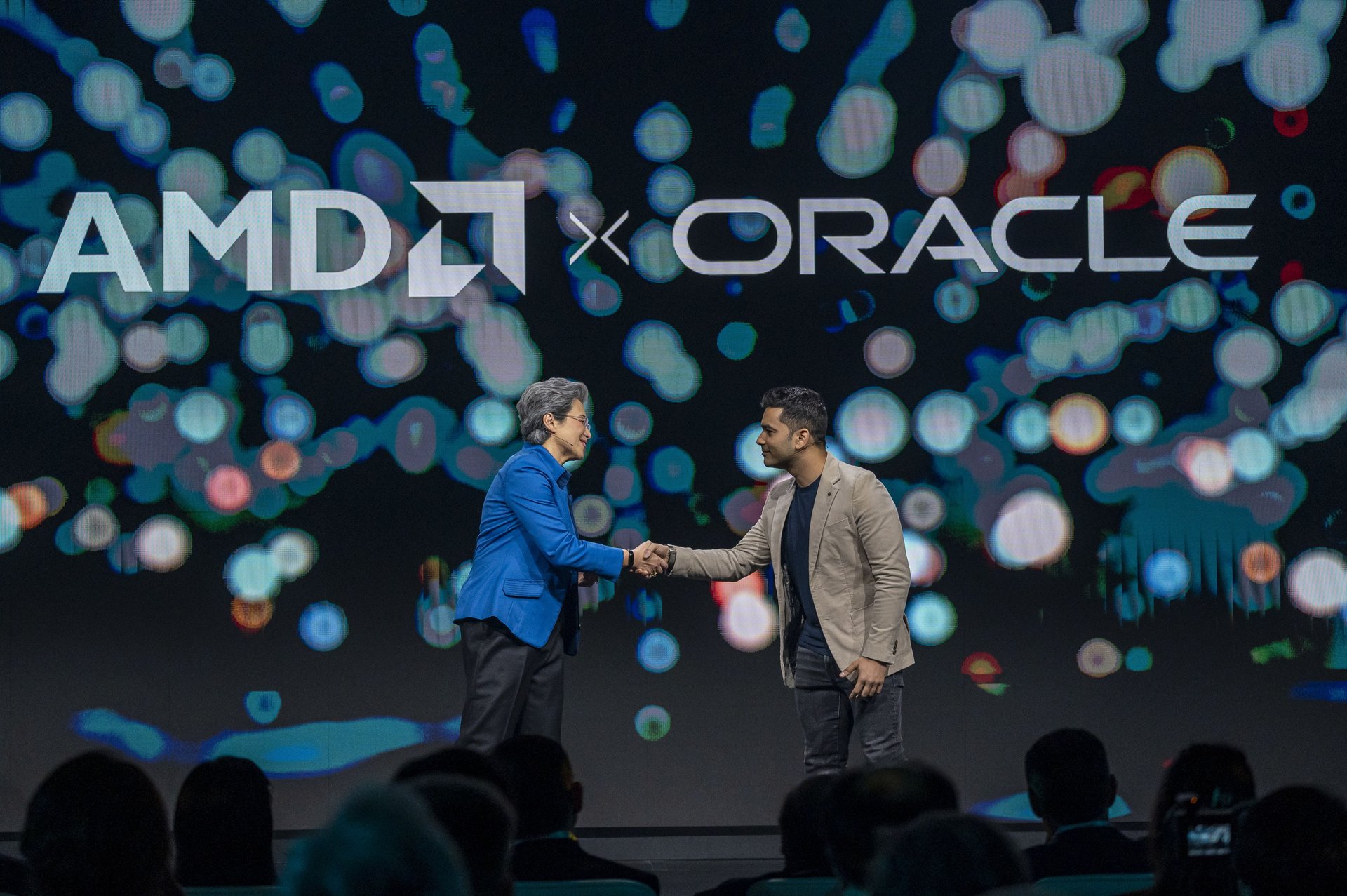Oracle's deal with AMD is bigger than 50,000 chips
Oracle’s cloud arm has been dining almost exclusively at Nvidia’s table. Now it's buying leverage — and that costs billions

David Paul Morris/Bloomberg via Getty Images
AMD isn’t coming for Nvidia’s lunch (not yet, at least). But Oracle’s 50,000-GPU deal with AMD, announced Tuesday, does mean the software giant won’t have to beg Nvidia for seconds. Oracle’s cloud arm has been dining almost exclusively at Nvidia’s table, where access is measured in wafer batches and waiting lists. Oracle is buying leverage — a negotiation tactic that just happens to cost billions.
Every AI firm right now is feeling the hunger. Compute power is the new currency, and Nvidia has been the market’s main course. Its chips, software stack, and interconnects have become both the backbone and bottleneck of the industry, leaving even trillion-dollar companies to compete for scraps. The Oracle-AMD announcement is less about what Oracle is buying than it is about what it’s broadcasting: that it won’t be left starving while the rest of the valley feasts.
The timing is the real tell. Oracle’s announcement comes amid a scramble among megaclouds to secure “second sources” — rival suppliers who can hedge both shortages and optics. Those 50,000 AMD Instinct MI450s aren’t even shipping until 2026 (which, in AI time, can feel like next century). Between now and then, Nvidia will release new architectures. So Oracle’s big order is more hedge than harvest, a note to shareholders that it’s thinking ahead.
Leverage replaces loyalty
With this partnership, Oracle gets to remind Nvidia that loyalty isn’t unconditional, and AMD gets to remind investors that it still belongs in the conversation. It’s a neat symbiosis of optics: Oracle looks active, AMD looks ascendant, and Nvidia still looks entrenched.
The scale alone underscores the hierarchy. Nvidia’s data-center GPU fleet numbers in the millions; Oracle’s planned 50,000 AMD units would barely register on Nvidia’s balance sheet. Yet in the market’s imagination, even a hint of supply competition counts as disruption. Wall Street cheered the announcement because it suggested that someone — anyone! — might ease the bottleneck that has been inflating hardware costs and stock prices alike.
AMD, for its part, has been waiting years for this kind of invitation. It has the silicon pedigree but not the software ecosystem; Nvidia’s CUDA remains the default language of machine learning. So the MI450 will have to prove it can match Nvidia’s performance without collapsing under compatibility issues — a challenge no amount of marketing bravado can smooth over.
AMD’s momentum has gained fresh air from its newly disclosed multigigawatt supply deal with OpenAI where, under the agreement, AMD will deliver up to 6 gigawatts of GPU capacity over several generations, beginning with the MI450 series in 2026, and OpenAI is granted warrants to acquire up to 160 million shares (roughly 10 % of AMD) contingent on delivery milestones. This makes the Oracle–AMD deal less about immediate compute and more about credibility: AMD is no longer a speculative alternative, it’s a sanctioned partner of one of the AI world’s heaviest users.
In a capital-intensive industry, the appearance of competition can be almost as valuable as the competition itself.
The illusion of abundance
In the end, every new headline about “competition” only strengthens Nvidia’s mythology. Every “diversification” announcement in this cycle reinforces the same truth: Nvidia’s grip is so complete that even small acts of independence become news events. Each scramble for an alternative supply confirms the scarcity that keeps the company’s margins fat. AMD’s big win here is psychological: the sense that choice still exists. Oracle’s win is political: a little leverage at the negotiation table.
But Nvidia’s win is structural: a world so dependent on its ecosystem that even defiance reinforces its dominance.
The Oracle-AMD deal hints at what the next phase of AI infrastructure will look like — not rebellion, but redundancy. The industry isn’t trying to dethrone Nvidia; it’s trying to ensure that the next supply shock or tariff or tweet doesn’t derail its ambitions. It’s the beginning of a more balanced meal — one where resilience, not reverence, decides who gets to eat.
Oracle didn’t just buy GPUs this week. It bought time, leverage, and the illusion of choice — the new currency of the AI economy. Oracle’s table might look fuller after this week, but the recipes haven’t changed. The AI feast remains Nvidia’s to cater, and everyone else is still borrowing utensils. The meal goes on, and the kitchen still belongs to the same chef — but AMD is on the line, plating dishes of its own.
